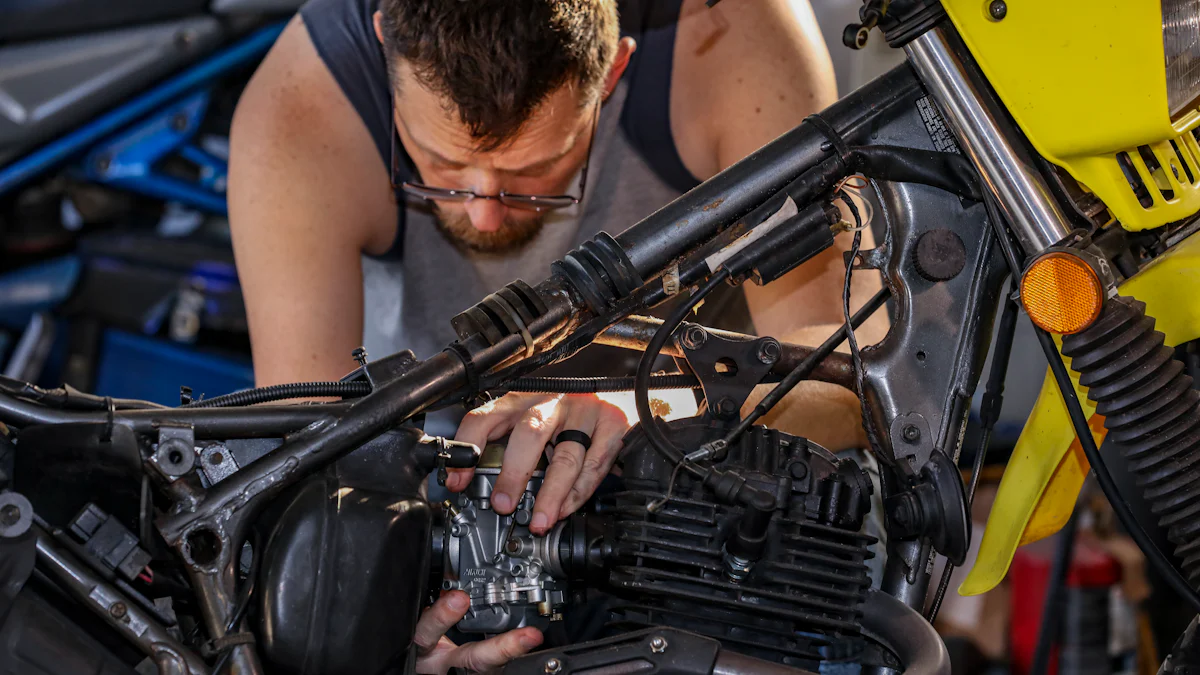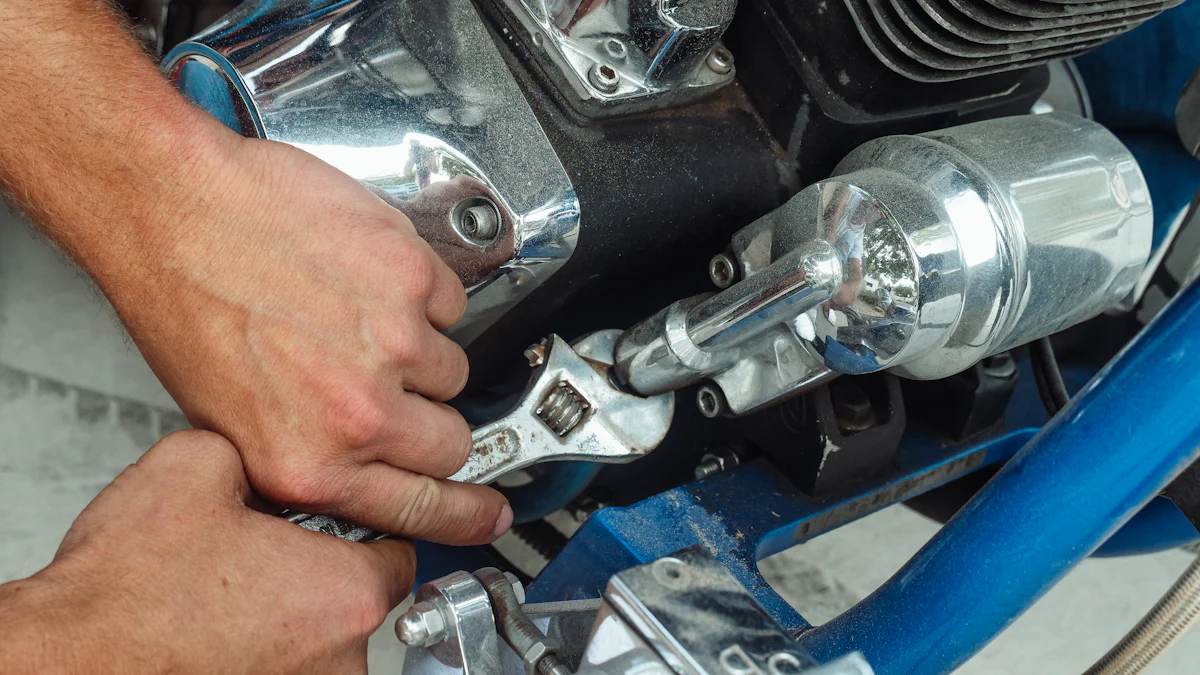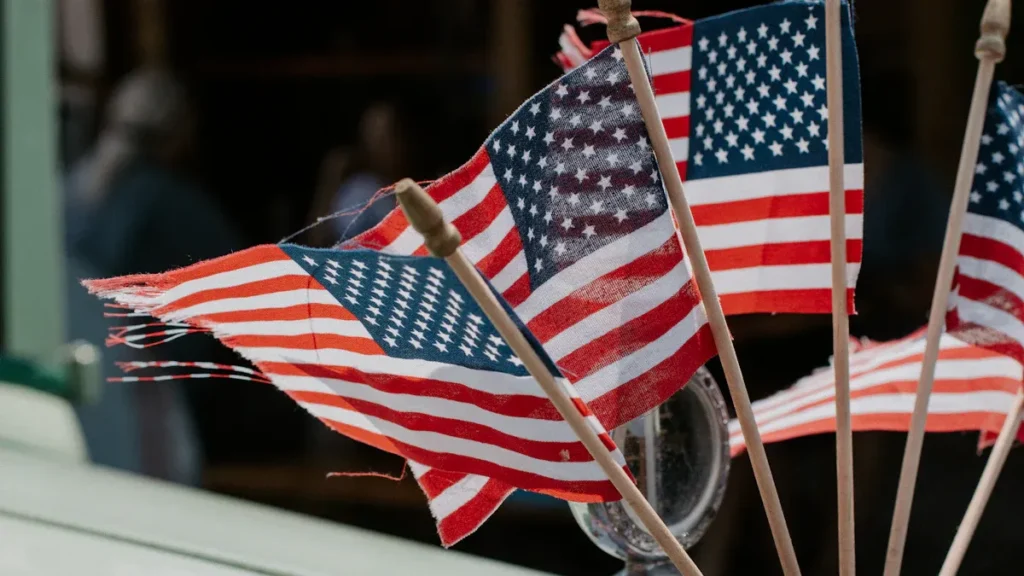How to Fix and Replace Your Harley Clutch
Table of Contents
-
Motorcycle Flag Mounts
Motorcycle 1 1/4″ Highway Engine Guard Crash Bar For Harley Sportster XL 1200 883 2004-2021
$149.99 – $259.99Price range: $149.99 through $259.99 This product has multiple variants. The options may be chosen on the product pageRated 0 out of 5 -
Motorcycle Flag Mounts
Motorcycle LED Saddlebag Lid Spoiler Kit For Harley Touring Road King Electra Glide Street Road Glide 2014-2024
$67.99Rated 0 out of 5 -
Flag Mounts & Flags
2Pack Support Breast Cancer Awareness with Stylish Harley Davidson Motorcycle Flags
$19.99Rated 0 out of 5 -
Flag Mounts & Flags
2Pack Breast Cancer Awareness Harley DavidsonMotorcycle Flag – Ride with Purpose
$19.99Rated 0 out of 5

The clutch in your Harley-Davidson motorcycle plays a vital role in transferring power from the engine to the transmission. It ensures smooth gear shifts and precise control over your ride. When the clutch starts failing, you may notice slipping, jerking motions, or difficulty shifting gears. These signs often indicate worn or damaged components. Fortunately, you can replace the clutch on your Harley with the right tools and guidance. This task, while technical, is manageable for most motorcycle enthusiasts willing to invest time and effort.
Key Takeaways
Gather essential tools like a socket wrench set, torque wrench, and clutch spring compressor to ensure a smooth clutch replacement process.
Prioritize safety by working in a stable, well-lit area and wearing protective gear such as gloves and safety glasses.
Inspect clutch plates for wear and replace them if they fall below manufacturer specifications to maintain optimal performance.
Follow a step-by-step guide for disassembly and reassembly, ensuring each component is handled with care to avoid damage.
Adjust the clutch cable tension correctly to ensure smooth operation and prevent strain on the clutch components.
Test the clutch thoroughly after installation to confirm proper engagement and address any issues immediately.
Consider upgrading to a performance clutch kit for enhanced grip and durability, especially if you ride in demanding conditions.
Tools and Materials Needed to Replace the Clutch

Before you begin replacing your Harley clutch, gathering the right tools and materials is essential. Having everything prepared will make the process smoother and more efficient.
Essential Tools
To successfully replace your Harley clutch, you’ll need a set of reliable tools. These tools ensure precision and safety during the repair process:
Socket Wrench Set: Use this to remove and tighten bolts with accuracy. A complete set with various sizes will cover all the fasteners on your Harley.
Torque Wrench: This tool helps you apply the correct amount of torque when tightening bolts. Over-tightening or under-tightening can lead to mechanical issues.
Screwdrivers (Flathead and Phillips): These are necessary for removing screws on the primary cover and other components.
Clutch Spring Compressor Tool: A specialized tool like the Jim’s Tools Clutch Spring Compressor is crucial for safely compressing and installing the clutch spring. It ensures proper alignment and prevents damage to the spring.
Drain Pan for Oil: Use this to catch the old oil when draining the primary case. It keeps your workspace clean and prevents spills.
Materials
Replacing the clutch also requires specific materials. These items ensure the new clutch operates smoothly and lasts longer:
Replacement Clutch Kit: Choose a kit that matches your Harley model. For enhanced performance, consider the Screamin’ Eagle Performance Clutch Kit, which includes Kevlar-based friction discs and a performance clutch spring. Alternatively, the Barnett Extra Plate Kit offers increased friction surface and durability by replacing the spring disc with additional plates.
Primary Case Gasket: A new gasket is essential to prevent oil leaks when reassembling the primary cover.
Motorcycle Oil: Fresh oil is necessary to refill the primary case after the repair. Always use oil recommended for your Harley model.
Cleaning Supplies: Keep rags and a degreaser handy to clean components and remove any residue or grime.
Pro Tip: If your Harley uses a 9-plate clutch, upgrading to a 10-Plate Clutch Kit can improve performance. Follow the service manual instructions for proper installation.
By assembling these tools and materials beforehand, you’ll save time and avoid interruptions during the repair. Proper preparation sets the foundation for a successful clutch replacement.
Safety Precautions for Replacing a Harley-Davidson Clutch
When working on your Harley-Davidson clutch, safety should always come first. Taking the right precautions ensures not only your well-being but also the success of the repair process. Follow these guidelines to create a safe and efficient workspace.
Preparing Your Workspace
A well-organized and stable workspace is essential for any motorcycle repair. Proper preparation minimizes risks and helps you focus on the task.
Ensure the motorcycle is on a stable lift or stand: Use a high-quality motorcycle lift or stand to keep your Harley secure. A wobbly or unstable setup can lead to accidents or damage to your bike.
Work in a well-ventilated area with adequate lighting: Choose a space with plenty of fresh air to avoid inhaling fumes from oil or cleaning products. Bright lighting allows you to see every detail clearly, reducing the chance of errors.
Pro Tip: Lay down a non-slip mat under your workspace to catch any dropped tools or parts and prevent slipping hazards.
Personal Safety
Protecting yourself during the repair process is just as important as protecting your motorcycle. Simple safety measures can prevent injuries.
Wear gloves and safety glasses: Gloves shield your hands from sharp edges, hot surfaces, and chemicals. Safety glasses protect your eyes from debris, oil splashes, or accidental tool slips.
Avoid working on a hot engine; let it cool down first: Always allow the engine to cool completely before starting. Hot components can cause severe burns if touched.
Reminder: Keep a first-aid kit nearby in case of minor injuries like cuts or scrapes.
Handling Fluids
Motorcycle repairs often involve dealing with fluids like oil, which require careful handling to avoid spills and environmental harm.
Properly dispose of old oil and other fluids: Use a drain pan to collect the oil when removing it from the primary case. Transfer the used oil into a sealed container and take it to a recycling center or an auto shop that accepts used oil. Never pour oil down the drain or onto the ground.
Environmental Tip: Many local auto parts stores offer free oil recycling services. Check with your nearest store for disposal options.
By following these safety precautions, you create a secure environment for replacing your Harley clutch. Prioritizing safety not only protects you but also ensures a smoother and more successful repair process.
Step-by-Step Guide to Disassembling the Clutch

Disassembling the clutch on your Harley-Davidson requires precision and attention to detail. Follow these steps carefully to ensure a smooth process and avoid damaging any components.
Draining the Oil
Locate and remove the drain plug: Begin by identifying the drain plug on the primary case. Use your socket wrench to unscrew it. Make sure your drain pan is positioned directly underneath to catch the oil.
Allow the oil to fully drain into the pan: Let gravity do its work. Wait until all the oil has completely drained out. This step prevents spills and ensures a clean workspace.
Tip: Warm up the engine slightly before draining the oil. Warm oil flows more easily, speeding up the process.
Removing the Primary Cover
Unscrew the bolts securing the primary cover: Use your socket wrench to remove the bolts around the perimeter of the primary cover. Keep the bolts organized to avoid confusion during reassembly.
Carefully remove the cover and set it aside: Gently pull the primary cover away from the motorcycle. Avoid forcing it off, as this could damage the gasket or the cover itself. Place it on a clean, flat surface.
Pro Tip: Inspect the gasket for wear or damage. If it appears worn, replace it with a new one to prevent oil leaks later.
Accessing the Clutch Assembly
Remove the clutch inspection cover: Locate the smaller inspection cover on the primary case. Use a screwdriver to remove the screws holding it in place. Set the cover and screws aside in a safe spot.
Loosen and remove the clutch springs: With the inspection cover off, you’ll see the clutch springs. Use the clutch spring compressor tool to compress the springs safely. Once compressed, remove them one by one.
Reminder: Handle the springs with care. They are under tension and could cause injury if mishandled.
By following these steps, you’ll gain full access to the clutch assembly. This process applies to most Harley-Davidson models, including both 9-plate and 10-plate clutches. Taking your time and working methodically will make the disassembly process straightforward and efficient.
Inspecting and Replacing Harley-Davidson Clutch Components
When you replace the clutch on your Harley, inspecting and replacing specific components is crucial for optimal performance. This process ensures that your motorcycle operates smoothly and avoids future mechanical issues. Follow these steps to carefully examine and replace the necessary parts.
Inspecting the Clutch Plates
The clutch plates are vital to the functionality of your clutch pack. Over time, these plates can wear out, warp, or sustain damage, leading to poor performance.
Check for signs of wear, warping, or damage: Examine each plate closely. Look for visible wear, discoloration, or any signs of warping. Damaged plates can cause slipping or uneven engagement.
Measure the thickness of the plates against manufacturer specifications: Use a caliper or micrometer to measure the thickness of each plate. Compare your measurements to the specifications in your Harley-Davidson service manual. Plates that fall below the recommended thickness should be replaced immediately.
Tip: If you notice significant wear or damage, replace the entire clutch pack to ensure consistent performance.
Replacing the Clutch Plates
Once you’ve identified worn or damaged plates, it’s time to replace them. Installing new clutch discs restores the efficiency and reliability of your clutch system.
Remove the old plates and friction discs: Carefully take out the worn clutch discs and friction plates from the clutch basket. Discard these components, as reusing them can lead to further issues.
Install the new plates in the correct order: Follow the sequence outlined in your Harley service manual. Alternate between friction discs and steel plates to ensure proper assembly. For enhanced performance, consider upgrading to a Screamin’ Eagle Performance Clutch Kit, which increases the surface area by 13% and improves torque handling.
Pro Tip: If your Harley uses a standard 8-plate clutch, upgrading to a 9-plate or 10-plate clutch pack, such as the Barnett Extra Plate Kit, can improve grip and durability. This kit eliminates the spring disc and adds extra plates, increasing the friction surface by up to 12%.
Inspecting Other Components
While replacing the clutch discs, inspect other related components to ensure the entire clutch system functions properly.
Check the clutch basket and hub for damage: Look for cracks, grooves, or excessive wear on the clutch basket and hub. These parts hold the clutch pack together and must remain in good condition.
Replace any worn or damaged parts as needed: If you find any issues with the clutch basket or hub, replace them with new components. Neglecting these parts can lead to premature wear on your new clutch discs.
Reminder: Always use high-quality replacement parts that match your Harley model. This ensures compatibility and extends the lifespan of your clutch system.
By thoroughly inspecting and replacing the clutch components, you’ll restore your motorcycle’s performance and reliability. Taking the time to address these details prevents future problems and enhances your riding experience.
Reassembling the Clutch and Making Adjustments
Reassembling your Harley-Davidson clutch requires precision and attention to detail. Following these steps ensures that your motorcycle operates smoothly and efficiently after you replace the clutch.
Reinstalling the Clutch Assembly
Secure the new clutch plates with the springs: Begin by placing the new clutch plates and friction discs into the clutch basket in the correct sequence. Refer to your Harley service manual for the proper order. Once the plates are in place, position the clutch springs over them. Use a clutch spring compressor tool to compress the springs safely and align them correctly.
Tighten the springs to the specified torque: Use a torque wrench to tighten the clutch springs according to the torque specifications provided in your Harley manual. Proper torque ensures the springs hold the clutch plates securely without causing unnecessary wear or damage.
Pro Tip: Double-check that the diaphragm spring is installed with the concave side facing the pressure plate. This alignment is critical for proper clutch function.
Replacing the Primary Cover
Install the new gasket and secure the cover with bolts: Before reattaching the primary cover, inspect the surface for any residue or damage. Place the new gasket onto the primary case, ensuring it aligns perfectly. Position the cover over the gasket and secure it with bolts. Tighten the bolts evenly in a crisscross pattern to prevent warping.
Refill the primary case with fresh oil: After securing the primary cover, refill the primary case with the recommended motorcycle oil for your Harley model. Use a funnel to avoid spills and check the oil level to ensure it meets the required amount.
Reminder: Always use high-quality oil to maintain the performance and longevity of your clutch system.
Adjusting the Clutch
Adjust the clutch cable for proper tension: Locate the clutch cable adjuster, typically found along the cable near the handlebars. Loosen the locknut and turn the adjuster to achieve the correct tension. The clutch lever should have a slight amount of free play, usually about 1/8 inch, before engaging. This adjustment ensures smooth operation and prevents unnecessary strain on the clutch components.
Test the clutch lever for smooth operation: Pull the clutch lever several times to confirm it moves freely and engages the clutch properly. If the lever feels too tight or too loose, fine-tune the clutch cable adjustment until it feels just right.
Pro Tip: After adjusting the clutch cable, start the motorcycle and test the clutch engagement in a safe area. Shift through the gears to ensure everything operates smoothly.
By carefully following these steps, you’ll complete the reassembly process and restore your Harley’s clutch system to optimal performance. Proper adjustments and attention to detail during this stage will enhance your riding experience and extend the life of your clutch.
Final Tips and Troubleshooting for Replacing the Clutch
Replacing the clutch on your Harley-Davidson is a rewarding task, but testing and troubleshooting are essential to ensure everything works perfectly. This final section will guide you through verifying your work and addressing common issues.
Testing the Clutch
Testing the clutch after installation confirms that it functions correctly. Follow these steps to evaluate its performance:
Start the motorcycle and test the clutch in a safe area
Begin by starting your Harley and letting it idle for a few moments. Engage the clutch lever and shift into first gear. Slowly release the lever while applying light throttle. Observe how the clutch engages and whether the motorcycle moves forward smoothly. Perform this test in an open, safe space to avoid accidents.Ensure smooth engagement and disengagement of gears
Shift through all the gears while riding at a moderate speed. Pay attention to how the clutch responds when you pull the lever and release it. Smooth engagement and disengagement indicate proper installation. If you notice any unusual noises, jerking, or resistance, further adjustments may be necessary.
Pro Tip: Test the clutch under different conditions, such as uphill starts or quick gear changes, to ensure it performs well in various scenarios.
Common Issues and Fixes
Even with careful installation, you might encounter some issues. Here are common problems and their solutions:
Clutch slipping after replacement: Check for proper installation
If the clutch slips when you accelerate, inspect your work. Ensure the clutch plates are installed in the correct order and the springs are tightened to the specified torque. Verify that the diaphragm spring is aligned properly. Slipping often results from improper assembly or insufficient spring tension.
Difficulty shifting gears: Recheck cable tension and adjustments
If shifting gears feels stiff or unresponsive, examine the clutch cable. Adjust the cable tension to ensure the lever has the correct amount of free play. A misaligned or overly tight cable can prevent the clutch from fully disengaging, making gear changes difficult. Fine-tune the adjustment until the lever operates smoothly.
Reminder: Always refer to your Harley-Davidson service manual for model-specific troubleshooting tips and torque specifications.
By testing the clutch thoroughly and addressing potential issues, you can ensure your Harley is ready for the road. Taking the time to troubleshoot and fine-tune your work enhances the reliability and performance of your motorcycle.
Replacing the clutch on your Harley-Davidson may seem challenging, but breaking it down into manageable steps makes it achievable. You’ve learned how to gather tools, follow safety precautions, disassemble and inspect components, and reassemble everything with precision. Safety and preparation are key to success. Always consult your Harley-Davidson manual for model-specific details to ensure accuracy. With patience and attention to detail, you can confidently restore your motorcycle’s performance and enjoy a smoother ride.
FAQ
What is the purpose of the friction discs in a Harley clutch?
Friction discs play a critical role in your Harley’s clutch system. These discs, often coated with materials like Kevlar, Aramid, or Carbon, create the necessary grip to transfer power from the engine to the transmission. When compressed by the clutch springs, they prevent slipping against the metal plates, ensuring smooth and efficient power delivery.
Tip: Regularly inspect the friction discs for wear or damage. Worn discs can lead to clutch slippage and reduced performance.
How can you increase the efficiency of your Harley clutch?
Upgrading to an extra plate kit, such as the one offered by Barnett, can significantly enhance your clutch’s efficiency. This kit replaces the spring disc with two additional friction plates, increasing the friction surface by 12%. The added surface area improves grip and extends the lifespan of the clutch components.
Pro Tip: Consider this upgrade if you frequently ride in demanding conditions or want to boost your Harley’s performance.
What should you check during Harley clutch reassembly?
During reassembly, inspect the clutch basket fingers and the splines of the clutch hub for signs of wear or damage. Excessive wear can prevent the clutch discs from sliding properly, leading to malfunction. Ensuring these components are in good condition is essential for the clutch to operate smoothly.
Reminder: Replace any worn or damaged parts to avoid future mechanical issues.
How do you know when it’s time to replace your Harley clutch?
Common signs of a failing clutch include slipping, difficulty shifting gears, jerking motions, or unusual noises during operation. If you notice any of these symptoms, it’s time to inspect the clutch components and consider a replacement.
Quick Tip: Address clutch issues promptly to prevent further damage to your motorcycle.
Can you replace a Harley clutch without professional help?
Yes, you can replace a Harley clutch on your own if you have the right tools, materials, and guidance. Following a detailed step-by-step guide, like the one provided in this blog, makes the process manageable for most motorcycle enthusiasts.
Note: If you’re unsure about any step, consult your Harley-Davidson service manual or seek professional assistance.
What type of oil should you use after replacing the clutch?
Always use motorcycle oil recommended for your specific Harley model. High-quality oil ensures proper lubrication and extends the life of your clutch system. Check your owner’s manual for the exact specifications.
Tip: Avoid using automotive oil, as it may not meet the requirements of your Harley’s clutch system.
Why is adjusting the clutch cable important?
Proper clutch cable tension ensures smooth operation and prevents unnecessary strain on the clutch components. A correctly adjusted cable allows the clutch lever to engage and disengage the clutch efficiently, improving overall performance.
Pro Tip: Check the clutch cable tension regularly, especially after replacing the clutch, to maintain optimal functionality.
What are the benefits of upgrading to a 10-plate clutch kit?
Upgrading to a 10-plate clutch kit increases the friction surface, providing better grip and durability. This upgrade is particularly beneficial for riders who demand high performance or frequently carry heavy loads. It also enhances torque handling, making your Harley more responsive.
Did You Know? A 10-plate clutch kit can improve the clutch’s lifespan and reduce maintenance needs over time.
How long does it take to replace a Harley clutch?
For most novice mechanics, replacing a Harley clutch takes about an hour if all the necessary tools and parts are ready. However, the time may vary depending on your experience and the specific Harley model.
Quick Tip: Allocate extra time for inspecting components and making adjustments to ensure a thorough and successful replacement.
What should you do with the old clutch components?
Dispose of old clutch components responsibly. Many local auto shops or recycling centers accept used motorcycle parts. Proper disposal helps protect the environment and keeps your workspace clean.
Environmental Tip: Check with your local recycling facility for guidelines on disposing of metal and oil-contaminated parts.








